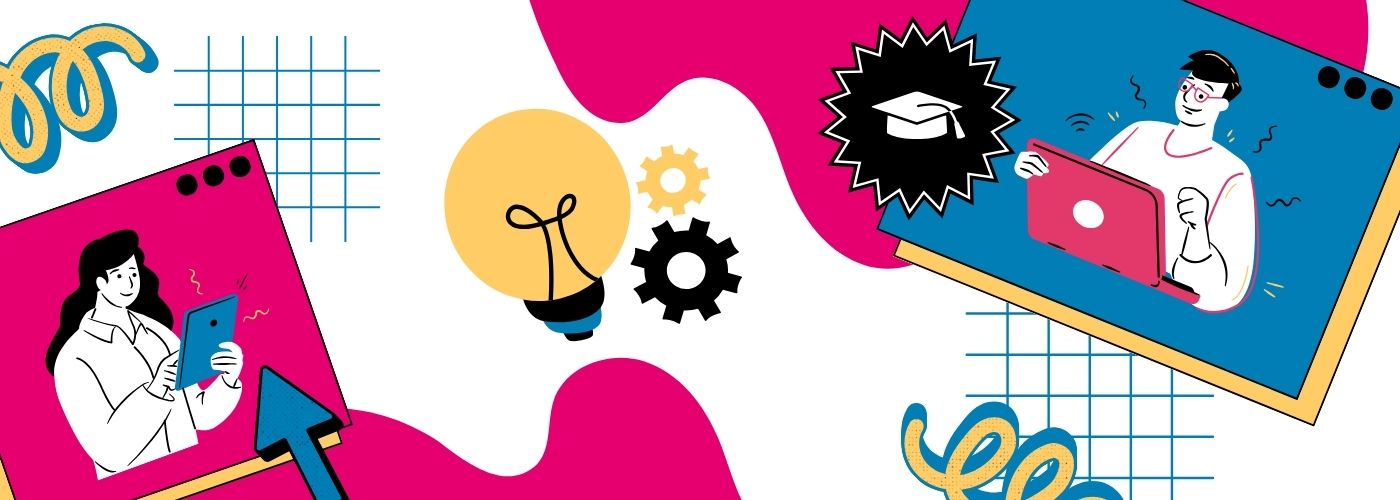Summarized Transcription vs. Real-Time Captioning in Higher Education
Updated: October 24, 2023
The 3Play Way: Real-Time Captioning in Higher Education [Free Webinar]
School is back in session, which means disability services offices are coordinating accommodations and working with students to ensure their higher education experiences are accessible. For students who are d/Deaf or hard of hearing, this often means using real-time (live) captioning or ASL interpretation.
However, higher education institutions are increasingly offering summarized transcription services instead of, or in addition to, real-time captioning. But what are these services, and how do they compare to real-time captioning?
In this blog, we’ll explore key differences between summarized transcription and real-time captioning and discuss when each accommodation may be most beneficial for students.
What is summarized transcription?
Summarized transcription and real-time captioning belong to a type of accommodation known as “speech-to-text services,” but their outputs are quite different. Summarized transcription services offer “meaning-for-meaning” transcriptions through transcribers that summarize the essence of a discussion and type out the spoken content. The user can then read the summarized transcript in real-time and after the discussion has ended.
Transcribers are often trained in text-condensing strategies, and these services can be used to transcribe notes for lectures, meetings, and other live events. Summarized transcription can be performed with the service provider at a remote location or in the classroom with the student.
What is real-time captioning?
Real-time captioning is performed in real-time using professionally trained captioners, automatic speech recognition (ASR) technology, or a combination of the two. Unlike summarized transcription, real-time captioning does not summarize the essence of a discussion but rather offers the content as verbatim, “word-for-word” transcription. To caption a high density of content accurately, real-time captioners are highly trained as stenographers or voice writers.
Real-time captions can be delivered to students through different mechanisms in the classroom. If the student is present in person, they can receive captions on a second screen, such as a tablet or laptop, using a solution known as Communication Access Realtime Translation, or CART. Similar to summarized transcription, real-time captioning can also be performed with the service provider at a remote location or in the classroom with the student.
Meaning-for-meaning vs. word-for-word transcription
Both meaning-for-meaning and word-for-word transcription aim to provide readers with accurate information to participate in and understand a discussion. However, the outputs are different.
The primary goal of meaning-for-meaning transcription is to convey a speaker’s intended meaning in as few words as possible so that a reader can quickly understand the information and participate in the discussion. In this context, accuracy is measured in terms of how closely the content captures the speaker’s intended meaning.
In contrast, word-for-word transcription aims to capture every word spoken in a discussion. Captioning accuracy is measured in terms of word and formatted error rates. Word error rate is the percentage of words that are incorrect; formatted error rate is the percentage of word errors when formatting elements such as punctuation, grammar, speaker identification, non-speech elements, capitalization, and other notations are considered. For closed captioning, all of these formatting elements are required to achieve at least 99% accuracy, the industry standard.
Which accommodation should you use?
As with most types of student accommodations, the decision to use a real-time captioning service or a summarized transcription service should come down to a student’s needs and preferences.
Generally, meaning-for-meaning transcription is ideal for consumers who care more about the overall meaning of what is spoken rather than the verbatim content; for students who want to understand the overall gist of a discussion rather than every single word, summarized transcription can be a great option. Meaning-for-meaning services can also be great for subject matter that lends itself well to an interpretation, such as certain humanities courses, whereas a word-for-word transcription might be better for math or science courses.
Real-time captioning is typically more expensive than summarized transcription due to the training required for stenographers and voice writers. However, real-time captioning is often preferred for consumers who want every word captured. Word-for-word transcription is better for complex subject matter where capturing every word is essential to understanding the spoken content.
Hard-of-hearing students, who can hear some or most spoken content but may need reinforcement from written text, might prefer using meaning-for-meaning transcription. On the other hand, deaf students might benefit more from real-time captioning.
Additionally, it’s important to remember that many students who benefit from real-time captioning or transcription are not deaf or hard of hearing. Students with other kinds of disabilities, such as Attention Deficit Disorder, often find that captioning provides the reinforcement they need to stay focused during and after class.
Learn more about 3Play’s real-time captioning service ⬇️
Further Reading

Subscribe to the Blog Digest
Sign up to receive our blog digest and other information on this topic. You can unsubscribe anytime.
By subscribing you agree to our privacy policy.







